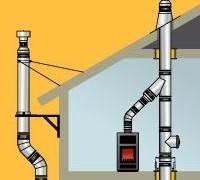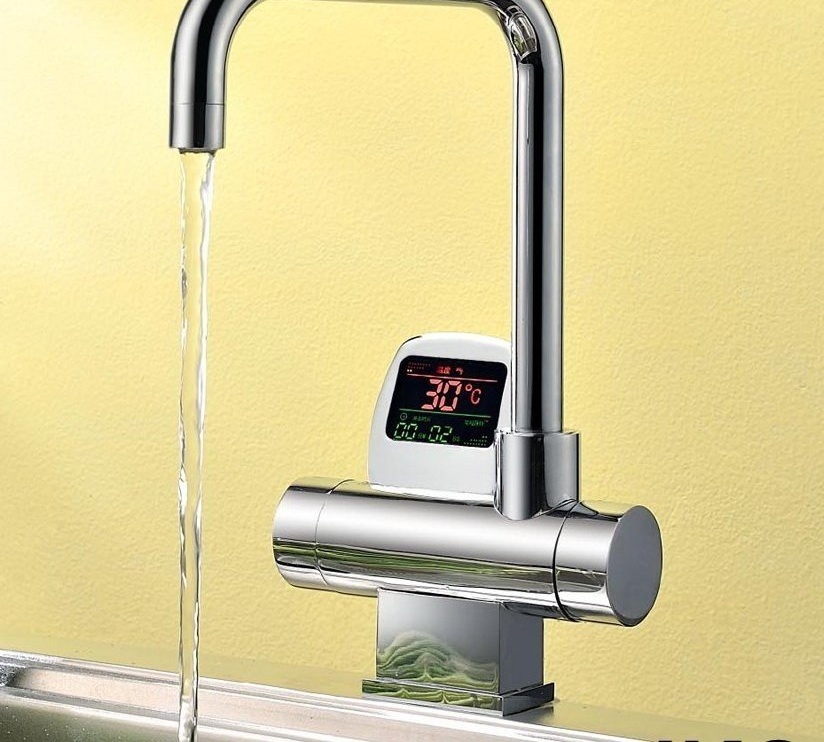Chimney damper: installation features + self-made example
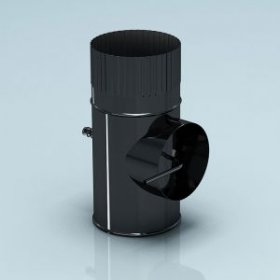
The effectiveness of the heating system in the house depends on many reasons. However, the main one can be considered the quality of the draft in the flue channel. If it is sufficient, low fuel consumption, high combustion efficiency and fast heating of the room are guaranteed. Insufficient air flow assumes all of the above factors with a minus sign and can provoke the appearance of extremely undesirable reverse thrust. That is why most of the structural elements of the chimney in one way or another connected with the process of regulating traction. Even an inexperienced builder will be able to design and install this fairly simple device to make a gate valve for the chimney with his own hands.
Purpose and types of device data
The valve on the chimney or, as it is also called, the gate is designed to regulate draft in the chimney. The operation is performed as follows. During combustion, the valve closes a certain section of the chimney channel. By decreasing or, conversely, increasing the area of the gate, it is possible to control air flows in the chimney and, accordingly, the flame force in the heater and draft. After the cessation of the combustion process, the valve closes so that the air flows do not carry away heat from the room. However, even in this state, the gate should not completely block the chimney: this is contrary to safety standards. The systems should be installed on almost all types of heating appliances except the latest models, where the draft is automatically adjusted using a deflector.
Topic article: How to improve draft in the chimney: where does the reverse draft come from and how to deal with it?
In their shape, the valves for chimneys must very accurately reproduce the cross section of the pipe. There are two design gates that are different from each other in design:
- Retractable. The most simple and reliable design. It moves only in the horizontal direction. It is most often installed in steel or brick chimneys. It is a smooth plate with holes easily moving in the guide grooves.
Swivel or throttle.
- The device rotates around its axis, as a result of which it can open or block the smoke channel. It is installed in cases when the sliding shutter cannot be used for various reasons.
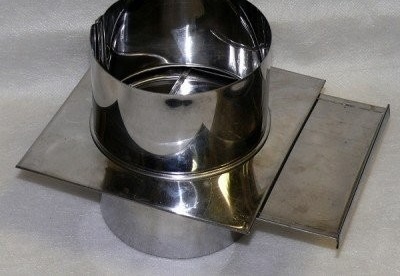
Retractable option. During combustion, the slide gate opens. The ability to control the area of the overlap of the smoke channel allows you to adjust the draft. After the fire goes out, the shutter closes

The butterfly valve rotates around its axis, blocking or, conversely, opening the smoke channel. It is installed when it is impossible to use a sliding shutter
The desired version of the system is selected based on the design features of the chimney. In addition to the type of device, material also plays an important role. Most commonly used:
- Cast iron. It makes very strong, reliable and durable products. Traditionally used to make devices. The main disadvantage is the large weight, so such valves can only be installed on brick pipes.
- Stainless steel. Lightweight, durable and corrosion resistant material. It does not affect the heat transfer of the heater, therefore, it allows to achieve maximum efficiency of the furnace. Steel gates are usually polished so that a smooth surface prevents soot from settling. Are established on any pipes.
Gate valve manufacturing example
The traditional chimney damper is very simple in construction and easy to make on its own. This can be especially true in the case when there are difficulties in the selection of new equipment.
Consider the option of manufacturing a rotary stainless steel gate. We work in the following sequence:
- We are preparing a frame for the shutter. The device is welded in size from steel corners, the width of the shelves of which is 35-45 mm.
- We drill holes for the axis. If we are going to make a gate with a “direct” turn, we place the hole exactly in the middle of the parallel sides of the frame. For the “corner” flaps, the holes are made diagonally.
- Weld bushings. These may be small sections of a half inch pipe. We control the correctness of their position: the axis of the bar should freely rotate inside.
- We prepare a blank for the shutter. From a steel sheet, the thickness of which is 2-3 mm, we cut out a plate of the required size.
- We put the workpiece into the frame and weld it to the axis. Make sure that around the entire perimeter between the frame and the shutter there is a gap of no more than 1 mm.
- We weld the limiter, which will have to hold the flap in the "closed" position.
- We fix the decorative handle on the axis, with the help of which the valve will turn.
This is how the whole thing looks:
As experience has shown, a chimney damper of this design is easily installed on the pipe and functions very efficiently. However, care must be taken to ensure that there is a small gap between the frame and the gate valve. Even when closed, the damper must let some air through.
Features of mounting the gate
Installation of the device is carried out during the installation of the flue channel. The prepared gate is exposed on the first meter of the chimney, since this arrangement provides the most convenient use of the device. A fragment of the chimney, on which the gate is installed, should not be insulated. Otherwise, the difference between the expansion coefficients of the inner and outer pipe can cause the valve to jam.
The installation of the damper in a brick chimney is carried out in the following order:
- We lay the first row of bricks for the pipe.
- Cut a fragment to the size of the valve. In this case, we must take into account the width of the sand-clay mortar layer on which the gate will be installed.
- In one of the masonry bricks, we make a hole for the groove of the rotary handle.
- Spread the second row. We make sure that it fits snugly against the first. If cracks form, they should be carefully repaired with cement mortar.
Another way to install a gate is called "pipe to pipe." It involves placing the damper in the chimney without additional mounting. The device is securely held in the system due to a very tight fit to the structure.
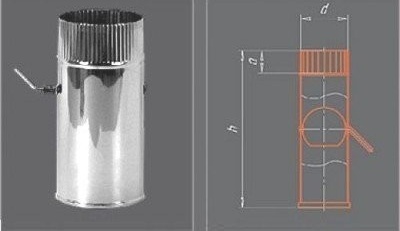
A fragment of the pipe into which the gate is mounted must not be insulated. Otherwise, as a result of the difference in the expansion coefficients, the damper may deform, which will cause it to jam.
Topic article: Standards and features of installation of a sandwich chimney: attention to safety
Pipe damper - a device necessary for adjusting the draft. This design can be purchased in specialized stores or made independently.Installing the gate is quite simple. However, those who do not have experience in installing chimneys should not undertake the independent installation of equipment. Too much depends on the quality of installation of the valve. Even minor problems can lead to poor traction and carbon monoxide in the room. It is better to entrust this work to professionals and in a short time get a chimney with a properly installed gate.
